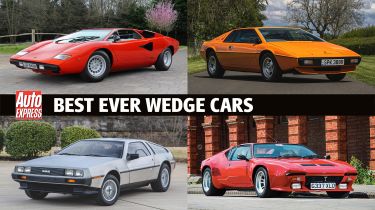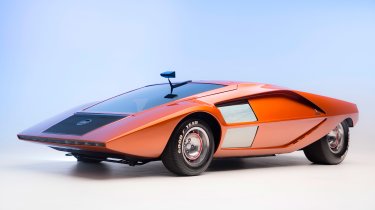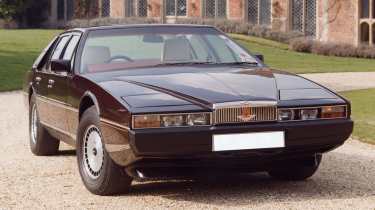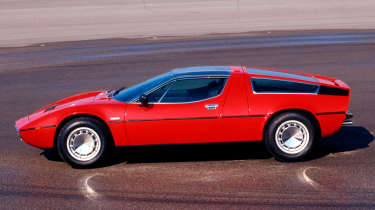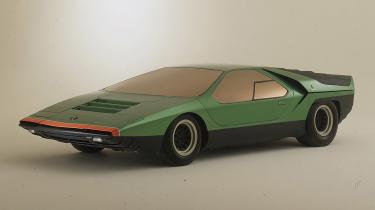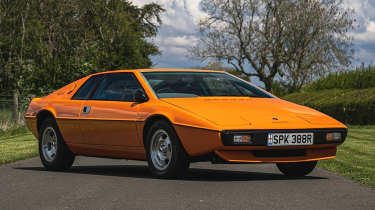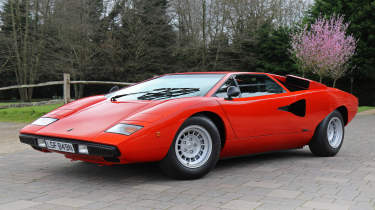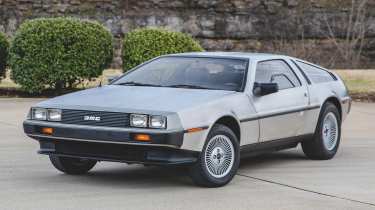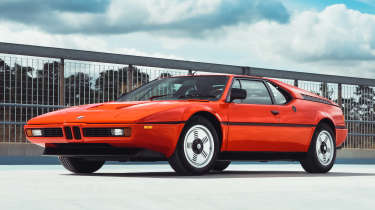Best ever wedge cars: angular design classics that get to the point
Angular and powerful, wedge cars wowed fans the world over
Fifty years after the debut of the Lamborghini Countach, the influence of wedge design lives on, as the sharp lines of the Honda 0 Series concept revealed in January demonstrated.
Wedge cars were dramatically angular vehicles, with the most high-profile designs often, but not exclusively, the work of two legendary Italian designers, Marcello Gandini (who died earlier this year) and Giorgetto Giugiaro.
Everyone has their own opinion on what makes a classic wedge, but these are our favourites.
Lancia Stratos HF Stradale
For many, the Stratos is among the coolest cars ever. It’s hard to imagine a model more defiantly ‘wedge’ than the Stratos Zero concept, which arrived in 1970 and preceded the production model. Although the Zero inspired the HF, it had little in common other than a shared name and the same designer (Gandini).
The HF was a sensation, with its stubby design and mid-mounted Ferrari V6 bringing great rallying success. With only 492 built for the road, it has become coveted by collectors, selling for hundreds of thousands of pounds on the rare occasions one becomes available.
DeTomaso Pantera
As far as car names go, the DeTomaso Pantera is among the best, sounding both exotic and menacing at the same time. And it has style to match. When the firm founded by the former Argentinian racing driver, Alejandro de Tomaso, revealed the Pantera in 1970, its stunning looks and Ford V8 power caused a stir.
The appeal was enduring, too, with the Pantera remaining in production until 1992 – a tribute to the exquisitely executed styling, which blended extreme angles with perfect proportions.
Aston Martin Lagonda
Aston Martin has built some of the most beautiful cars of all time. You’d be hard pushed to argue that the wedge-shaped four-door, four-seat saloon, the Lagonda, is among them. But it is unquestionably one of the British manufacturer’s most famous models ever.
Revealed as a concept at the London Motor Show in 1976, the Lagonda Series 2’s angular lines were a radical departure from the more conventional Series 1, and, combined with the car’s hi-tech (for the time) digital instrumentation, provided an intriguing glimpse of the future. Expensive (it cost more than £350,000 in today’s money), controversial (as many people hated the design as loved it) and very big (5,281mm long), the Lagonda is still a divisive car, but one that’s impossible to ignore.
Maserati Bora
When it comes to wedge designs, Maserati has form, with the wild Boomerang concept (created by Giugiaro and only 1,130mm tall) and the Khamsin grand tourer (designed by Gandini) both prime examples. But arguably the Maserati wedge that has stood the test of time best is the Bora – yet another Giugiaro design – which celebrated its 50th anniversary in 2021.
The mid-engined marvel had hi-tech features for the era – including fully independent suspension, air-con and disc brakes – but its looks perfectly fitted its “modern but not overly aggressive” brief. A difficult economic climate meant the Bora did not sell strongly, but appreciation of its charms has grown over the years.
Alfa Romeo Carabo
The Carabo differs from the other cars here in that it was only ever a concept, and never made it into production. But it’s worthy of inclusion for two important reasons. Firstly, it looks amazing. And secondly, it provided inspiration for two wedge classics from designer Gandini.
Based on the mechanicals of Alfa Romeo’s renowned 33 Stradale, the Carabo appeared at the 1968 Paris Motor Show, where its trailblazing design created a big impact. The front-hinged doors subsequently made their way on to Gandini’s Countach (and many other Lamborghinis). The Carabo also quite clearly influenced his Stratos Zero, which paved the way for the Stratos HF. Not a bad CV, then, for the Alfa.
Lotus Esprit
The 1976 Esprit has serious pedigree, earning immortality for its role in the following year’s James Bond movie, The Spy Who Loved Me (where it doubled as a submarine) – a bold choice for a secret agent constantly in the line of fire, given the Norfolk firm’s questionable reputation for reliability at the time.
The Esprit was a Giugario wedge – a great example of his ‘folded paper’ design concept, where straight lines and sharp edges were prominent – and it had commendable longevity, with refreshes keeping the Lotus in production until 2004.
Lamborghini Countach
Where else to begin than with a car regularly hailed as one of the most striking ever? The original Countach was introduced as a prototype at the 1971 Geneva Motor Show, where, as the mooted replacement for the Lamborghini Miura, it had big shoes to fill.
Faced with such a daunting challenge, designer Marcello Gandini’s approach was aggressive and the startling blend of sharp angles, scissor doors and a yellow paintjob ensured no one who saw the Countach would forget it. Production started in 1974, and the massive impact the car has made since was summed up by current Lamborghini design boss Mitja Borkert, who said: “The Countach was provocative and polarising. Its infamous recognisability demonstrates the purity of its design legacy.”
DeLorean DMC-12
Designed by Giorgetto Giugiaro, assembled (at great expense to the UK taxpayer) in Northern Ireland and the star of the Back To The Future movies, the DeLorean boasts a soap-opera backstory that has ensured it has become one
of the most controversial cars ever.
Rather incredibly, it has also achieved its exalted status despite being unremarkable – some say underwhelming, even – to drive. For that you can thank its futuristic wedge design, which still looks compelling, and some stand-out details,
including the stainless-steel body and very-much-of-its-time ‘Rustproof’ font. Even today, few cars can command
attention quite like the DeLorean.
BMW M1
Given that BMW has produced so many fantastic cars, it’s an indication of just how special the M1 is that many fans consider it the brand’s most iconic model ever.
The fibreglass-bodied supercar was another Giugiaro creation, and only in production for a relatively short period of time (between 1978 and 1981), with the result that a mere 399 examples were made (plus around 50 race cars). But what a legacy it enjoys.
Although the design stuck to a familiar wedge formula, the car looked spectacular, and the engine – an acclaimed 3.5-litre straight six from BMW’s famed M Division – was a peach. Sales were slow during its production run, but the M1 is now highly prized and priced accordingly; a 1980 example sold for $582,000 (£457,100) in Auburn, Indiana last year.
Click here for our list of the world's flattest cars...
